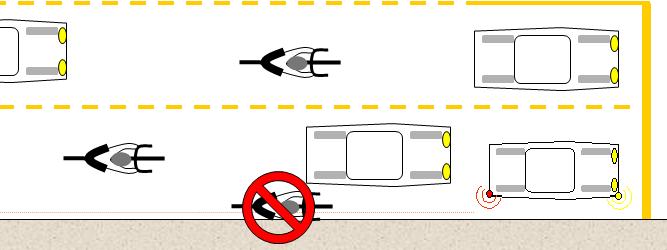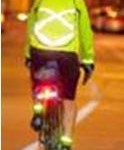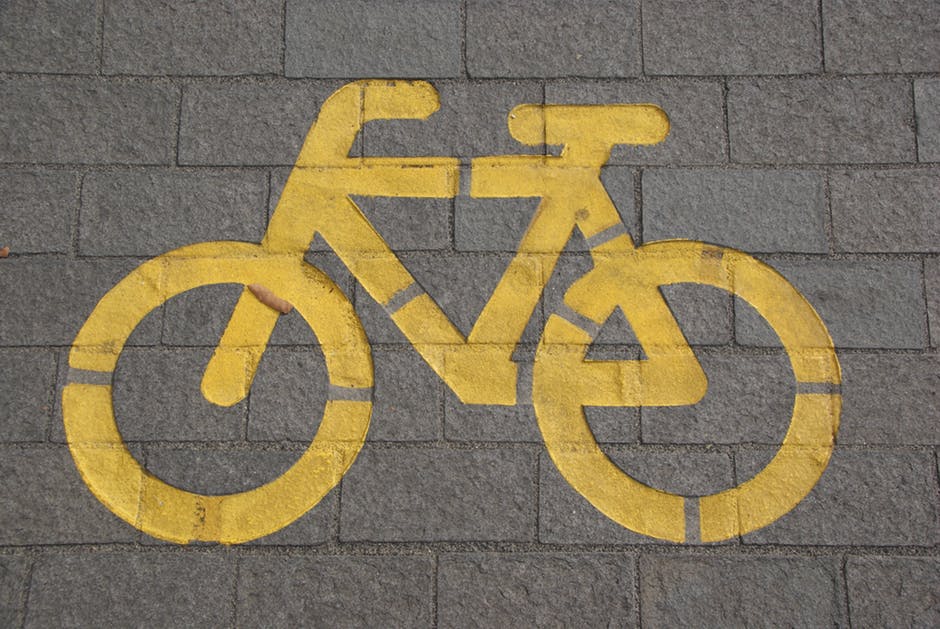The key factors to riding your bike safely can be summed up by the acronym MVPC from Cycling Canada’s CAN-Bike bicycle safety and skills program. Maneuverability, visibility, predictability, and communication. Reversing the order of these we get to one of the most important of these, communication. Lets leave that for now and check out a couple of other letters.
1. The 3 R’s
- Same Roads: You can and should use the roads. Don’t ride on the sidewalk! It’s illegal, but more importantly it is far more dangerous. Drivers are not looking fast moving bicycles on sidewalks. This makes intersections, especially driveways and back lanes where visibility can be more restricted, more dangerous for people on bike.
- Same Rights: You have the right to your space on the road.
- Same Rules: If you want respect, you need to follow the rules. You can’t have it both ways.
2. The 3 A’s
- Be “aware” of hazards on your route such as railroad crossings, poor road conditions, blind intersections, and wide road cracks.
- Stay “alert” at all times. Never assume that cars see you, especially at intersections. Intersections are by far the most common place where bikes and cars collide so when you are on your bike you need to be doubly alert. Expect the unexpected and watch for cars coming from all directions.
- Keep your “attitude” in check. Stay calm and focused on the job at hand. If you want to get even with someone, make it the person that treated you with respect and not the guy in the truck that passed by you too close for comfort.
3. Communicate
Communication is extremely important when you are on your bike. It is the only way that people driving in their cars know what to expect. It also makes you predictable which is another part of that MVPC acronym indicated above.
Know your hand signals and use them.When you signal make sure that they are more than just a lame gesture, make your signals clear and definitive. Point your finger (being cautious which finger) and let cars know exactly where you want to go. And don’t forget about the stop signal.
4. Shoulder check
While we are on the subject of signalling, you should always shoulder check before you reposition yourself on the road. The correct method for this is shoulder check, signal and shoulder check again before you make a change.
The first shoulder check is to not only survey the traffic situation behind you, but to ensure that you don’t stick your hand out directly into a passing car. Ouch!!! Your initial shoulder check also acts as an initial form of communication to approaching drivers that you intend to make a change in your position.
Now you have checked and planned your move its time to make that “clear” signal and then before actually making that change, shoulder check one more time to make sure that the space is clear.
Shoulder checks are often a forgotten safe riding skill, especially by cyclists weaving out to pass a parked car. Keep shoulder checks brief and practice them to ensure that you can do them while maintaining a straight line. (See # 9 practice your riding skills).

5. Be visible and predictable
While wearing bright reflective clothing and having lights will improve your visibility to others on the road, it is not only thing that we need to think about. Remaining in the motorist’s field of vision at all times is the key to being visible and predictable.
Don’t weave in and out of parked cars. Instead hold a straight line between those parked cars and be seen at all times by drivers approaching from behind. Don’t weave up onto the sidewalk and then back on the street to avoid traffic. Each time you weave out of sight you are going to have to weave back into the driver’s field of vision, unpredictably.
Approaching an intersection with a “right turn only” lane but you are going straight. Don’t move over into the right turn lane, hold your line and continue straight through the intersection. Always take the right most position on the road that takes you where you want to go.
6. Know where to ride
This takes us to the last item in the MVPC acronym, maneuverability. It is important to ride your bike in a position that allows you space to maneuver and to stay out of areas that can represent dangerous conditions.
Lets start with where to ride in general terms. The Highway Traffic Act states that bicycles should be “as close as practicable” to the right edge or curb. This does not mean as close as possible. Practicable for people on bikes means safe and we the CAN-Bike program recommends that you stay a minimum of 1 metre away from the curb. This distance allows you to avoid the debris, wide road joints, drainage grates, and gives you room to manoeuvre.

When passing parked cars, you need to increase this distance to approximately 1.5 metres so that you can stay out of the door zone.
7. Never pass motor vehicles on the right
We are all tempted to skid by along the curb when faces with a long line of traffic, however it is the quickest way to frustrate drivers and it’s illegal. Passing is always done on the left and that is of course an option. You can always move to the adjacent lane and flow through with the rest of traffic. But that is not for everyone so here is your other alternative.
As you approach an intersections, shoulder check, signal and reposition yourself to the centre of the lane, either in front of or behind the motor vehicles that are lined up waiting for a light. By positioning yourself in the centre of the lane you give yourself room to maneuver as you start up, and then you can return to the right side once you have the momentum to hold a straight line. We all wobble a bit when we first start up and it is much easier to do that safely when there is not several tonnes of metal beside you.

Your final option should there be a very long line of traffic is to dismount your bike and walk along the sidewalk (remember sidewalk riding is illegal) to the intersection, reposition yourself in a safe position and carry on.
8. Get yourself the right gear

Photo: Manitoba Public Insurance by permission
Wear a helmet. The most common accident for cyclists is simply falling, and head injuries are a common result. Helmet hair is one of the issues with wearing a helmet, but it beats cracking your head on the pavement.
Make sure to wear bright reflective clothing whenever possible, especially at night. Equip your bike with appropriate lights and reflectors. The Highway Traffic Act states you must have a white/amber light on the front and reflector on the back, but with today’s variety of inexpensive LED lights, a flashing rear light is by far a better choice.
9. Practice your cycling skills
One of the most overlooked riding skill is simple straight line riding. But don’t assume that it is simple, in fact it is much more difficult than you might think, especially when you add in signalling. Other skills like rock dodge, threshold or panic braking and quick turns are all skills that you should learn and practice. Check out this great video from Manitoba Cycling Association on bicycle handling skills. Mastering these skills will improve your confidence and your skill on your bike.
10. Take a course
If there are cycling skills training courses available in your area, sign up for one. Improve your knowledge and skills to make yourself a more confident rider. In Winnipeg, courses are offered through the Leisure Guide for both beginners and for those who have been commuting by bike but would like to increase their confidence and skills riding in traffic. Manitoba Public Insurance also has a “Cycling Champions” course that was developed by Bike Winnipeg.




Recent Comments